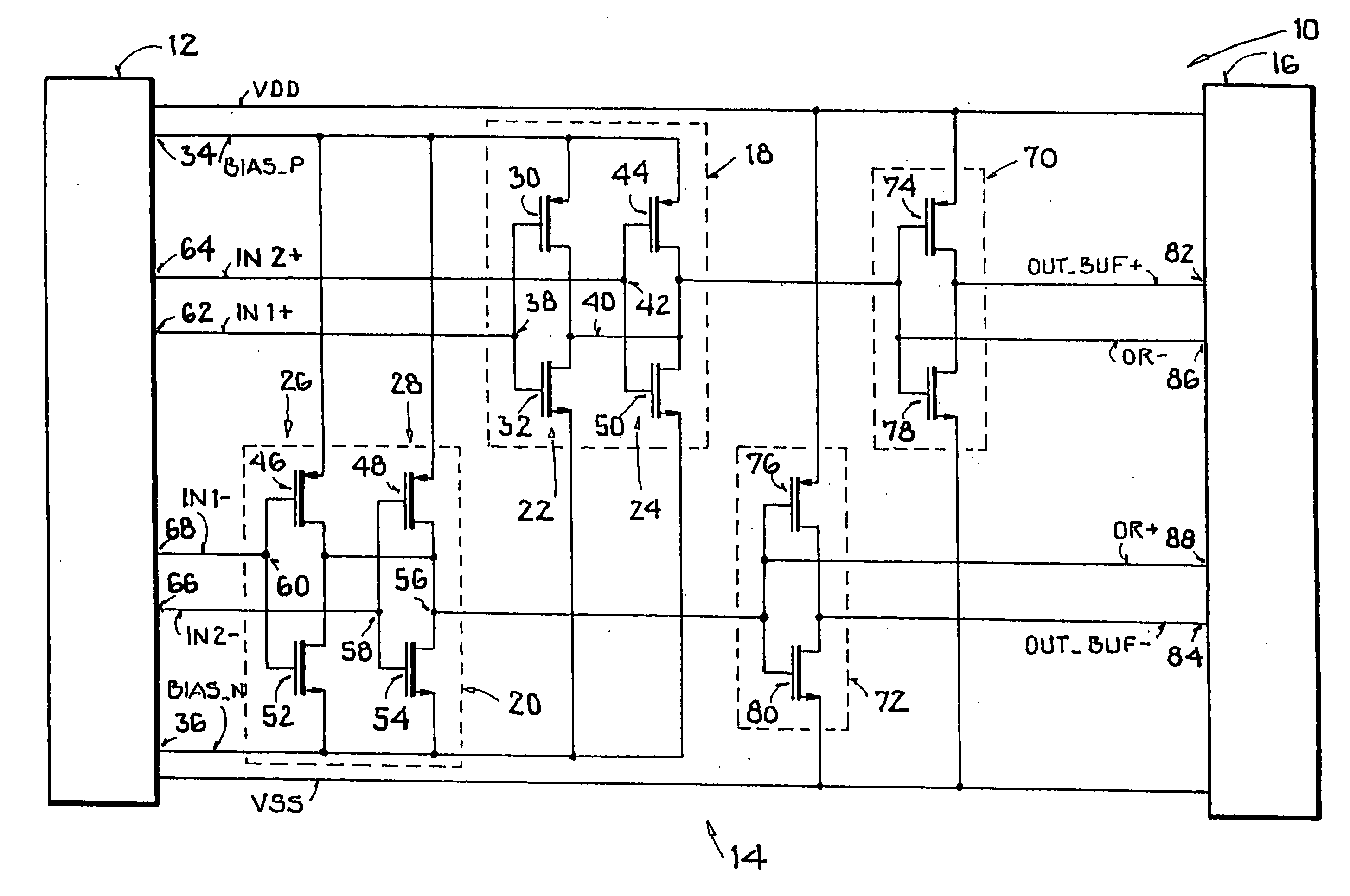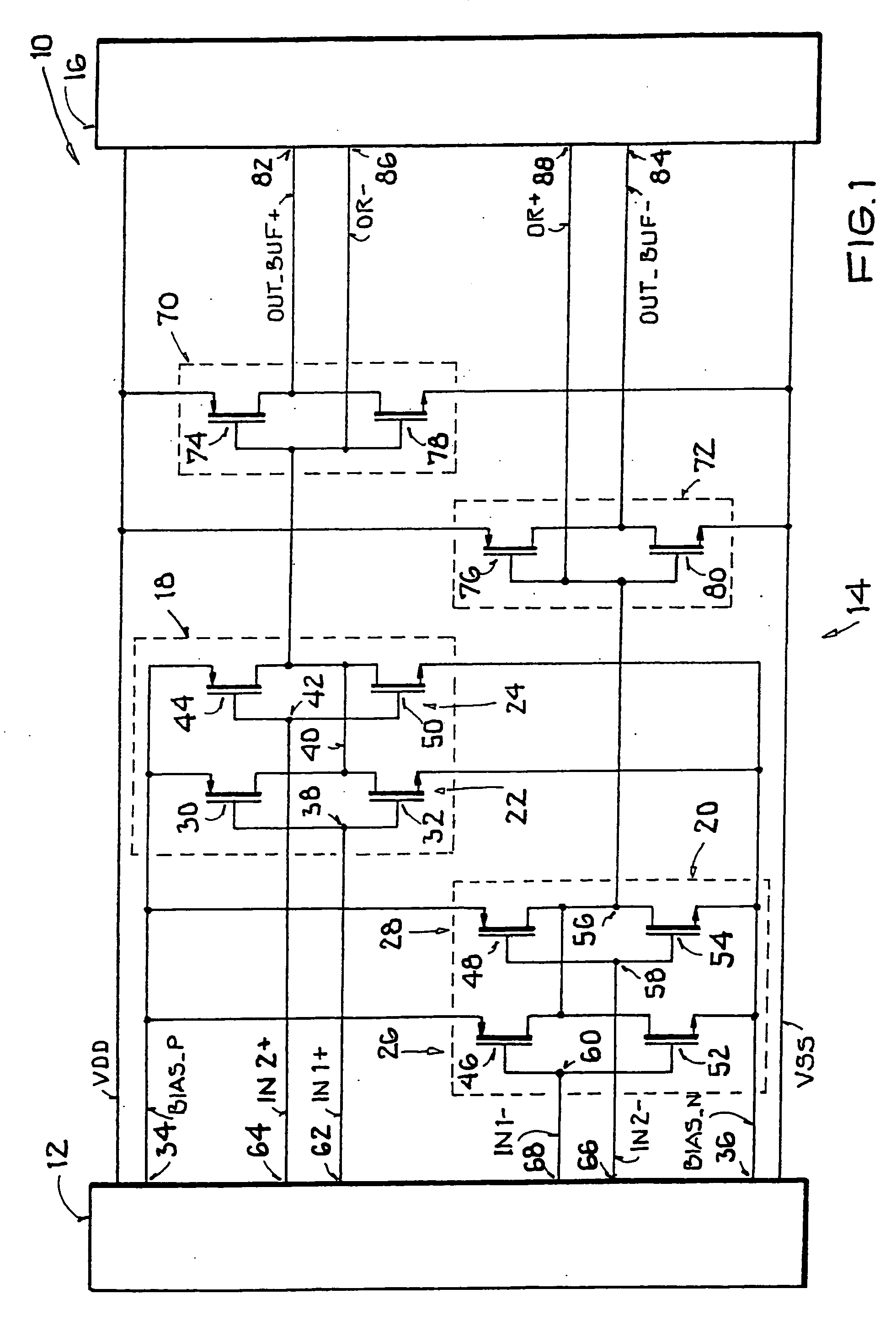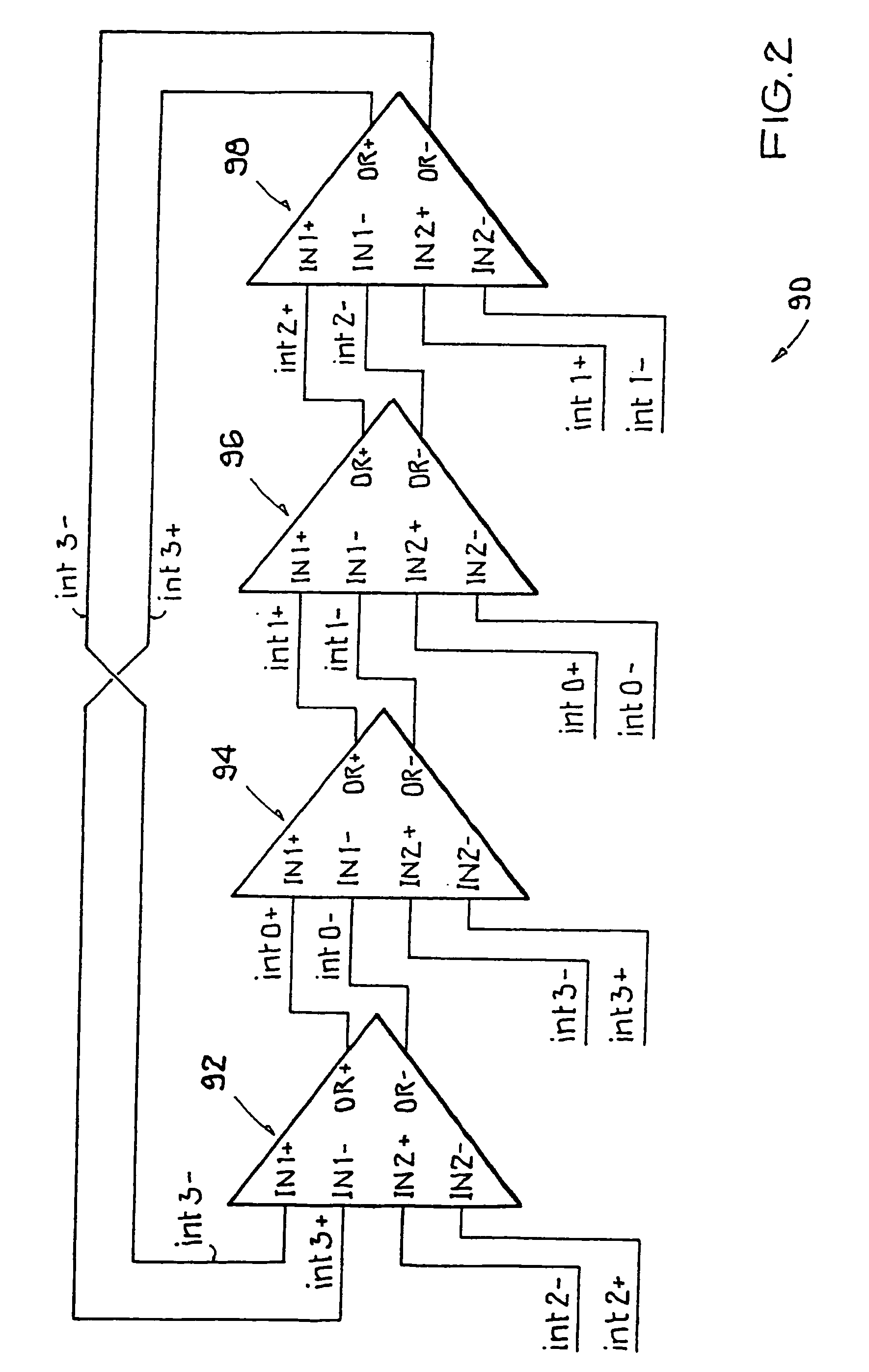Circuit with at least one delay cell
- Summary
- Abstract
- Description
- Claims
- Application Information
AI Technical Summary
Benefits of technology
Problems solved by technology
Method used
Image
Examples
Embodiment Construction
[0038] In particular, FIG. 1 shows a circuit 10 having an input circuit 12, a delay cell 14, and an output circuit 16. The delay cell 14 has two pairs 18, 20 of inverters 22, 24 and 26, 28. A first inverter 22 of the first pair 18 is preferably constructed as a CMOS inverter from a PMOS field-effect transistor 30 and an NMOS field-effect transistor 32 whose channels are located between a connection 34 with positive electrical potential BIAS_P and a connection 36 with negative electrical potential BIAS_N. When the gate connection 38, which serves as an input of the inverter 22, is driven with a positive potential, the channel of the NMOS transistor 32 conducts and the channel of the PMOS transistor 30 is turned off. As a result, the negative potential of the connection 36 is established at the output 40 of the inverter 22. Conversely, in the event of a negative potential at the gate connection 38, which results in a turned-off NMOS transistor 32 and conducting PMOS transistor 30, the...
PUM
 Login to View More
Login to View More Abstract
Description
Claims
Application Information
 Login to View More
Login to View More - R&D
- Intellectual Property
- Life Sciences
- Materials
- Tech Scout
- Unparalleled Data Quality
- Higher Quality Content
- 60% Fewer Hallucinations
Browse by: Latest US Patents, China's latest patents, Technical Efficacy Thesaurus, Application Domain, Technology Topic, Popular Technical Reports.
© 2025 PatSnap. All rights reserved.Legal|Privacy policy|Modern Slavery Act Transparency Statement|Sitemap|About US| Contact US: help@patsnap.com



